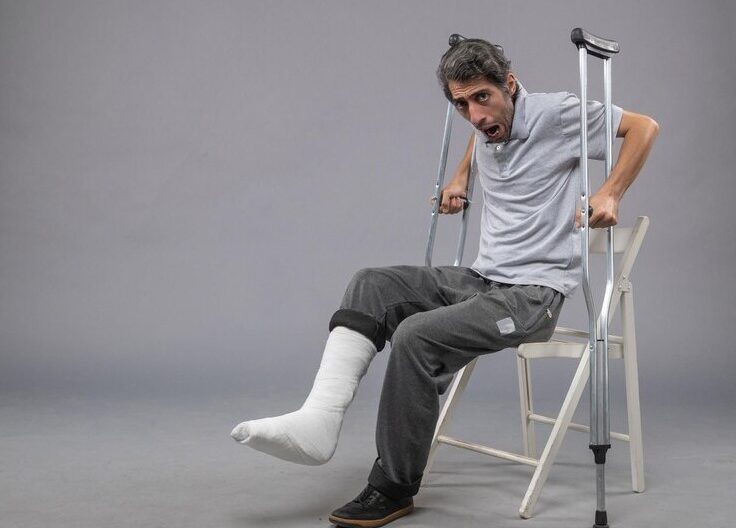
Numerous people are affected by joint discomfort, which can negatively impact everyday activities and reduce the enjoyment of motions that were previously taken for granted. It’s a quiet battle that people who have never felt its influence on them sometimes misinterpret and dismiss. The purpose of this blog is to provide information about common causes of orthopaedic conditions and support anyone looking for relief by shedding light on the nuances of joint pain.
Understanding the Musculoskeletal System
Our bodies are incredible engineering feats, and a key component of our strength and movement is the musculoskeletal system. It is this system—a web of muscles, connective tissues, and bones—that allows us to carry out our daily activities. However, that’s also where pain may begin, frequently without any prior notice. Joint pain is a notice from our body that something is wrong, whether it be from disease, overuse, or injury. It has nothing to do with becoming older.
Lifestyle and Environmental Factors
Our joint health is greatly impacted by the decisions we make every day. Our chance of experiencing joint discomfort is influenced by our work environment, diet, and level of activity. Little adjustments, like as switching to a balanced diet or adding mild activity to our daily schedules, can have a profound impact. It all comes down to adopting a lifestyle that protects our joints and stops discomfort before it begins.
The Silent Culprits: How Infections Can Lead to Joint Pain
You might be surprised to learn that infections can cause pain and discomfort in your joints. It is true. Although we frequently associate autoimmune disorders or physical wear and tear with joint pain, infections can also be the hidden cause of joint discomfort in some situations. For example, if Lyme disease—which is spread by ticks—is not treated quickly, it can result in severe joint pain and swelling. Similarly, following a viral infection, people may develop post-viral arthritis, which causes persistent joint pain. For prompt alleviation and treatment of joint pain, it is essential to identify these possible causes.
Autoimmune Disorders and Joint Pain
Our immune systems can sometimes work against us, resulting in autoimmune diseases like lupus and rheumatoid arthritis. These disorders include more than simply pain in the joints; they involve an ongoing struggle with inflammation and the body’s erroneous attack on its own tissues. The first step in controlling these diseases’ consequences and enabling people to live more fulfilling, pain-free lives is understanding these conditions.
Not Just Wear and Tear: Understanding Degenerative Joint Diseases
It’s simple to blame ageing or overuse for orthopaedic conditions when we consider the typical possibilities. There’s more to the tale, though, particularly with degenerative joint conditions like osteoarthritis. In addition to normal wear and strain, this disease also entails the degeneration of cartilage, which serves as a cushion between the bones of a joint. As a result of the bones rubbing against one another as this cushion ages, pain, stiffness, and decreased mobility result.
Osteoarthritis frequently develops quietly, impairing everyday functioning and quality of life. It serves as a reminder that taking good care of our joints should be a regular component of our health regimen, not only when we’re experiencing discomfort. Being aware that a combination of environmental, lifestyle, and hereditary factors contribute to degenerative joint illnesses might encourage us to take action. Easy measures like eating a balanced diet, exercising frequently, and avoiding overusing joints can significantly impact.
Common and Uncommon Causes of Joint Pain
Arthritis is commonly associated with joint discomfort. However, the tale does not finish there. Inflammation and pain are also contributed to by diseases like tendinitis and bursitis. Let’s not ignore the less well-known culprits, either. Even though they are less frequent, gout, lupus, and Lyme disease can produce excruciating pain and should not be disregarded. Every ailment has a history and affects people differently.
Navigating Treatment Options: From Conservative to Surgical Interventions
There are many different treatments available for treating joint pain, ranging from more intrusive procedures like surgery to conservative methods like physical therapy and medication. The secret is to figure out what suits you the best. For many, the best comfort comes from a mix of therapies. Investigating cutting-edge treatments that have demonstrated promise in the management of joint pain, such as stem cell therapies or platelet-rich plasma (PRP) injections, is also worthwhile.
Prevention Is Key: Tips for Maintaining Healthy Joints
Taking care of your joints now is the first step towards preventing joint discomfort. Modest lifestyle adjustments can have a significant impact on orthopaedic conditions. To begin with, keeping a healthy weight lessens the strain on your joints, particularly your knees and hips, which support the majority of your body weight. Frequent exercise strengthens the muscles that support your joints and maintains their flexibility. Just be careful to select low-impact exercises that won’t overwork your joints. Maintaining a healthy diet full of foods high in anti-inflammatory compounds can also help prevent joint discomfort. Finally, remember the significance of good posture and ergonomics, particularly if you work long hours at a desk. By making these changes today, you can help prevent joint discomfort in the future.
Beyond the Pain: Psychological and Emotional Effects of Chronic Joint Pain
Suffering from persistent joint pain is not just a physical hardship but also an emotional and psychological struggle. A persistent state of pain can annoy, worry, and even melancholy. It’s critical to recognise these emotions and look for assistance. Taking care of your mental health is just as essential as managing your physical symptoms, whether that means finding stress-relieving activities that suit you, speaking with a healthcare provider, or joining a support group.




